
 According to the Guinness Book of World Records, the honey badger is the world's most fearless animal. With ultra-thick skin and top of the line fighting instincts, this creature is not to be messed with. It boldly goes where similar animals consistently fear to tread.
According to the Guinness Book of World Records, the honey badger is the world's most fearless animal. With ultra-thick skin and top of the line fighting instincts, this creature is not to be messed with. It boldly goes where similar animals consistently fear to tread.
Let's take a deep dive into why Alchemy-Spetec's smallest slab lifting system, The PolyBadger, is named after this incredible animal. As Alchemy-Spetec regional manager Andy Powell mentions in this previous blog post...
"The Alchemy-Spetec PolyBadger lifting system is tough and compact. This system is an affordable entry-level slab lifting option for new contractors, as well as an extremely portable addition to the experienced contractor’s arsenal. The PolyBadger is a lot less expensive than your standard 20-foot trailer rig. The setup is simple and requires minimal equipment. The entire system can easily fit in the back of a pickup truck!"
Like the Honey Badger, the PolyBadger lifting system is both Tough and Compact
The PolyBadger slab lifting system is durably built and designed to go where other lifting systems simply cannot venture. Here's a quick rundown...
- The PolyBadger is smaller in size than most of the competition, at 30" wide and 48" long. Now that's what you call portable!
- This is one of the few systems powered through a common 120-volt wall outlet (vs the usual 240-volt requirement). Compatibility with common wall outlets exponentially increases your location possibilities.
- Essential elements (heaters, electronics, auto calibrator) are self-contained and protected in the cabinet for extra portability.
- The cabinet is constructed from powder coated carbon steel and the frame is constructed from carbon steel box tubing.
- The entire system is very maneuverable, resting on two swivel and two fixed 6-inch pneumatic castor wheels. The wheels are are filled with light weight polyurethane instead of air, so they don't go flat.
- The hose is built to last with a Teflon core and a stainless-steel braid. The system can operate with up to 200 feet of hose.
One last very important point:
Honey badgers are also mentally tough. They've been known to build stools with rocks in order to get over walls even break through locks on food freezers! Nothing stops them! The PolyBadger system's auto calibrator provides similar qualities to keep it going through thick and thin. As Andy Powell mentions in this previous blog post...
"The genius of the PolyBadger is the auto calibrator. It keeps the flow of A-side and B-side slab lifting material on ratio, eliminating the possibility of crossover clogging in the gun or the whip hose. The two low-pressure transfer pumps and auto calibrator are literally the only moving parts in the whole system. That means less downtime, less maintenance, and more productivity on the job."


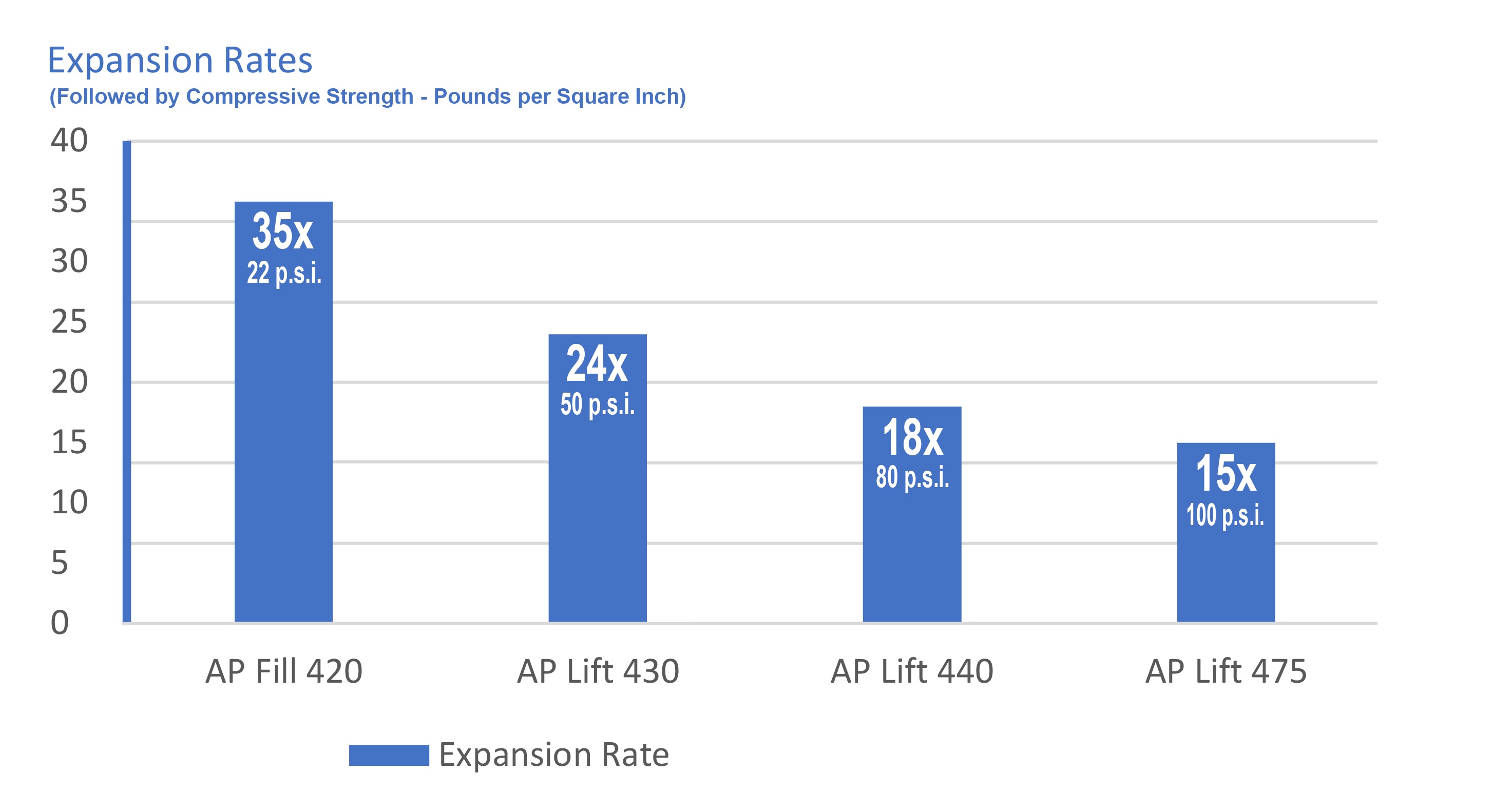


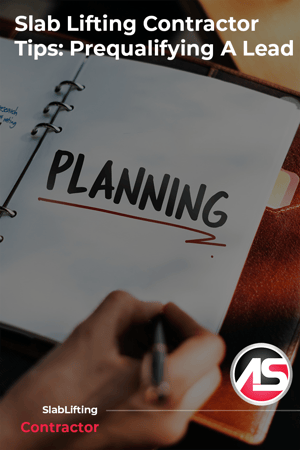 I met with a contractor today who does residential slab lifting and for some reason we ended up talking about incoming leads and how to prequalify them. Every slab lifting or foundation contractor has experienced driving for hours to look at a potential job that turns out to be a wasted trip. Every property owner has probably taken time off from work to meet a contractor who wasn't the right fit either. It's not anyone's fault but it can be avoided, saving both the contractor and the property owner valuable time.
I met with a contractor today who does residential slab lifting and for some reason we ended up talking about incoming leads and how to prequalify them. Every slab lifting or foundation contractor has experienced driving for hours to look at a potential job that turns out to be a wasted trip. Every property owner has probably taken time off from work to meet a contractor who wasn't the right fit either. It's not anyone's fault but it can be avoided, saving both the contractor and the property owner valuable time.
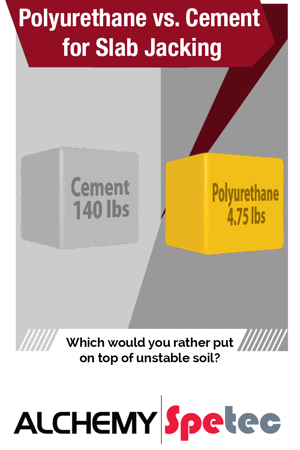

 Aim for Opportunity
Aim for Opportunity





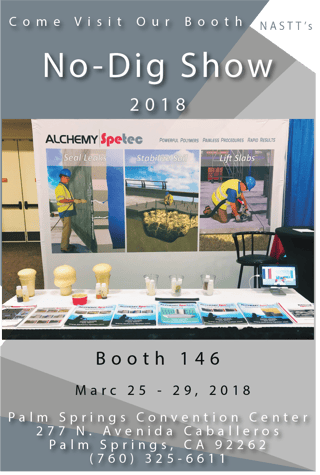

.png?width=320&name=Process%20and%20Applications-%20social%20(2).png) The Deep Lift
The Deep Lift

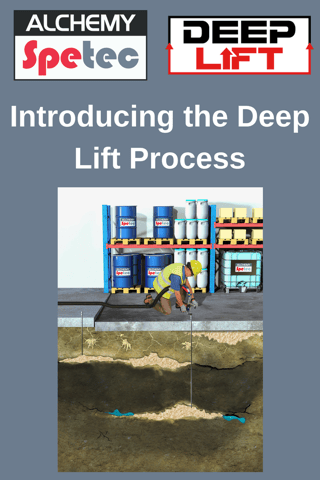 Poor compaction, water erosion, broken pipes, and organic material in the soil can all lead to settling of a foundation or a roadway. Traditional slab lifting can bring concrete and structures back into place but it doesn’t necessarily address the underlying issue or guarantee a long term fix. Other methods of addressing deep soil issues require heavy equipment, extended down time, and collateral property damage. These situations create problems for property owners as well as opportunities for the elite contractors that know how to fix them.
Poor compaction, water erosion, broken pipes, and organic material in the soil can all lead to settling of a foundation or a roadway. Traditional slab lifting can bring concrete and structures back into place but it doesn’t necessarily address the underlying issue or guarantee a long term fix. Other methods of addressing deep soil issues require heavy equipment, extended down time, and collateral property damage. These situations create problems for property owners as well as opportunities for the elite contractors that know how to fix them. 